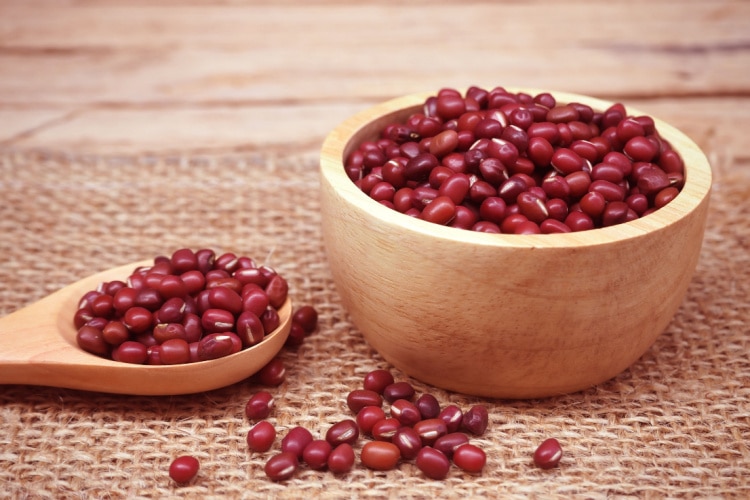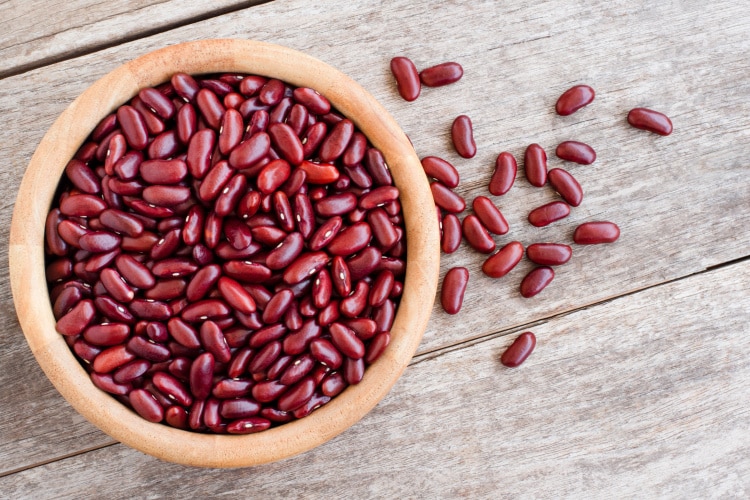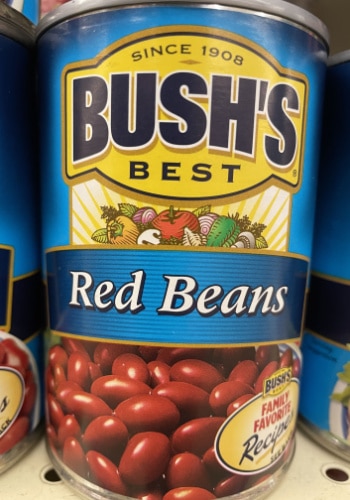If you use beans regularly in your cooking, we’re sure you enjoy many recipes that call for red beans. However, there are lots of beans that are red in color, one of them being kidney beans.
Contrary to popular belief, red beans and kidney beans are not the same! But what exactly sets them apart? Let’s compare them and find out.
Difference Between Red Beans and Kidney Beans
The main difference between red and kidney beans is their shape and size.

Red beans are shaped like an oval and are much smaller in size. Kidney beans, on the other hand, are neither oblong nor circular. These beans, whose name gives them away, are shaped like a kidney and are bigger in size.

All beans are categorized as belonging to the family of legumes. In turn, legumes are a category of vegetables.
Beans have high fiber content and a significant amount of protein, which is fascinating.
There are hundreds of distinct bean kinds in nature, and beans come in a wide range of sizes and colors, the most popular being navy beans, black beans, garbanzo beans, pinto beans, fava, and lima beans.
Returning to our topic at hand, not only do red and kidney beans differ in appearance, but they also have a slightly different flavor, mouthfeel, and uses in cooking. So, let’s compare them with each other’s individual characteristics, from color and flavor to ingredient pairings and shelf life.
Color: Red beans are pale red, an almost pinkish type of red, and appear considerably brighter than kidney beans. Kidney beans, on the other hand, are a deeper, darker red.
Flavor: The flavor of red beans is somewhat beany and nutty. Kidney beans have a more meaty flavor and a mild sweetness to them.
Flavor absorber: Kidney beans absorb the flavor of the ingredients they are cooked with; therefore, their mildly sweet and meaty flavor won’t be as noticeable. Red beans, on the other hand, retain their beany taste.
Texture: Red beans have a considerably creamier and smoother texture. The skin of kidney beans is dense and thick. Even when thoroughly cooked, kidney beans are tougher and denser on the inside.
Uses: Red beans are a mainstay in true Louisiana red beans and rice recipes and a variety of Mexican delicacies such as red Mexican casserole, nachos, and burritos. On the other hand, kidney beans are a staple in dishes like fajitas, Indian dal, rajma, and Mexican Ragu chili.
Ingredient pairings: Both kinds of beans go nicely with rosemary, garlic, thyme, parsley, and onion. When combined with cajun, cayenne, and paprika, red beans taste fantastic. On the other hand, kidney beans go incredibly well with cumin, bay leaf, and oregano.
Storage: Both red and kidney beans should be stored in a cold and dry area in an airtight container.
Shelf life: The shelf life is the same for all bean varieties. Raw beans lose their nutritional value and quality after two years. Cooked red and kidney beans can be stored in the fridge for 3 to 5 days.
Red Beans vs. Kidney Beans Comparison Table
Nutritional Content Breakdown: Which One Is Healthier?
Both kinds of beans are equally healthy. Red beans contain somewhat fewer calories, as well as more fiber than kidney beans.
Nevertheless, it’s crucial to remember that canned kidney beans’ nutritional composition varies from manufacturer to manufacturer. For instance, some manufacturers increase the salt level while others slightly reduce it.
Overall, the nutritional table shows that these variations are minor. Therefore, regardless of the kind you choose, you won’t make a mistake in terms of nutritional value.
Red Beans vs Kidney Beans: Nutritional Profile
| Category (1 cup) | Canned Red Beans | Canned Kidney Beans |
| Calories | 200 | 207 |
| Carbs | 92g | 38g |
| Fat | 0g | 0.9g |
| Sodium | 99.4mg | 655mg |
| Protein | 32g | 13.4 |
| Fiber | 63.9g | 11g |
| Sugar | 4g | 4.7g |
| Vitamins & Minerals | ||
| Calcium | 240.5mg | 74.2mg |
| Iron | 10.8mg | 3.2mg |
General Health Benefits of Red Beans & Kidney Beans
Red and kidney beans may have slightly different nutritional profiles, which is why they are both associated with similar health benefits. Here are a few advantages that beans provide for your health.
- Beans help maintain a healthy liver. The mix of low saturated fat and high fiber in beans safeguards the health of the liver.
- Beans are a good substitute for animal protein. They include a spectrum of essential amino acids that make up proteins. Yet, compared to sources of protein from meat, beans contain fewer calories.
- Antioxidants are abundant in beans, most particularly polyphenols. These are some of the most prevalent antioxidants that combat free radicals.
- The heart benefits from eating beans. They prevent numerous heart problems by lowering cholesterol levels. Additionally, as they are high in fiber, beans reduce the risk of heart disease.
- Beans have a lot of folate in them. Red blood cell production and proper cell function are facilitated by folate, also known as vitamin B-9.
Can I Substitute Red Beans for Kidney Beans & Vice Versa?
Red beans can be used in place of kidney beans, and vice versa, despite having somewhat different textures and flavors.
Chili is one of the many recipes where that can be used interchangeably. Just remember that kidney beans are harder and will structure the chili, whereas red beans will produce a creamier texture.
In addition, other bean kinds may be used as a stand-in for either kidney beans or red beans. They can be replaced with pink beans and cranberry beans. Other excellent alternatives to kidney beans are pinto beans and black beans.
Cooking With Canned Red Beans & Kidney Beans

To maximize their flavor, canned red beans and kidney beans must be prepared carefully. Here are a few tips and tricks for cooking with canned red and kidney beans.
Tip #1: Draining & rinsing is a must! Water and salt in canned beans cause them to release starches, which can change the flavor and consistency of your dish.
Tip #2: Use the liquid from the can! The residue may be used as a flavoring and thickening ingredient in soups and stews since it’s composed of water, salt, and starch.
Tip #3: Don’t overseason! Canned red beans are already seasoned with salt, so don’t go overboard with the spices and herbs in your recipe.
Tip#4: Don’t overcook! While fresh beans can simmer for a few hours, attempting the same with canned beans would result in a mushy disaster. Because they are fully cooked, be sure to add them last.
Conclusion
Have you “bean” thinking about the difference between red beans and kidney beans? Well, we hope that is now all clear to you!
If you go to the farmers market and spot dark red beans, which are usually larger, you can be sure those are kidney beans. Red beans are much smaller and have a pale red color.
When cooking, remember that kidney beans have a thicker outer coat, so they retain their texture much better. On the other hand, red beans are better flavor absorbers.
Whether you prefer red beans or kidney beans, there is no denying that beans are a blessing due to their delicious taste and noteworthy health advantages. So it’s time to start eating beans more frequently if you haven’t already!







